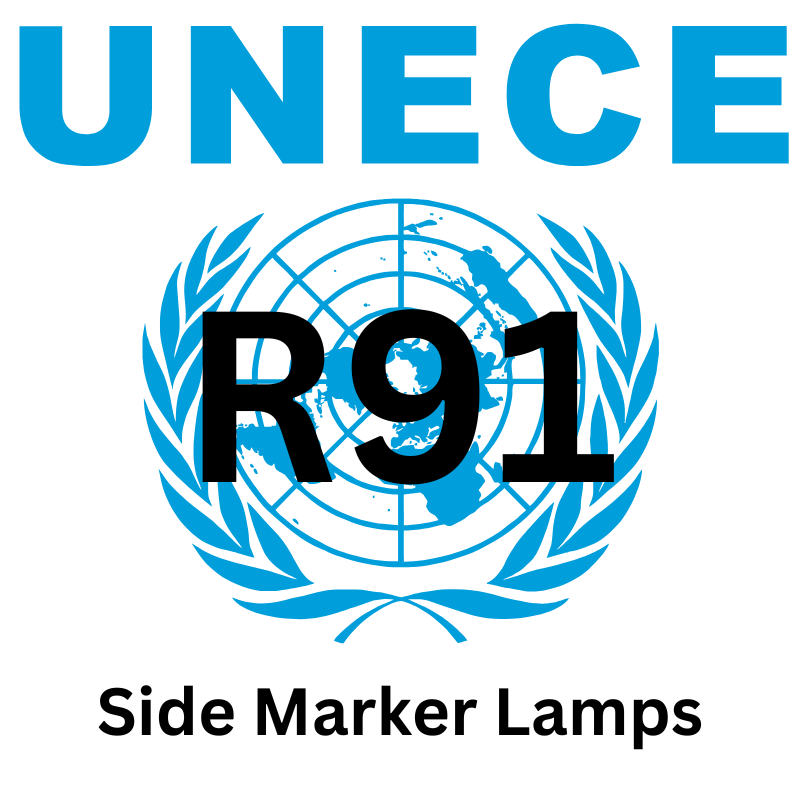Guide To: ECE Regulation 91
05 July 2018

UN ECE Regulation No. 91 provides uniform provisions for the approval of side-marker lamps used in motor vehicles and their trailers. Side-marker lamps are crucial for enhancing the visibility of a vehicle from the side, especially in low-visibility conditions such as at night or during adverse weather. This regulation sets out the technical requirements to ensure these lamps function effectively and meet safety standards.
Scope of the Regulation
UN ECE R91 applies to:
- Side-marker lamps for vehicles in categories M, N, O, and T, which include motor vehicles such as passenger cars, trucks, trailers, and tractors.
Key Features of UN ECE R91
Definition and Function of Side-Marker Lamps:
- A side-marker lamp is a lamp that indicates the presence of a vehicle when viewed from the side.
- These lamps are designed to improve visibility by providing illumination along the sides of vehicles, helping to prevent side-on collisions in low-light conditions.
Design and Performance Requirements:
- Light Intensity: The regulation specifies minimum and maximum light intensities for side-marker lamps:
- For Category SM1, the minimum intensity along the reference axis is 4.0 candelas (cd), while the maximum intensity within the specified angular field is 25.0 cd.
- For Category SM2, the minimum intensity is 0.6 cd, with the same maximum intensity of 25.0 cd.
- Colour of Light: Side-marker lamps must emit amber light, except for the rearmost side-marker lamp, which may emit red light if it is grouped with other rear-facing lamps, such as the rear position lamp, rear fog lamp, or stop lamp.
Durability and Environmental Resistance:
- Side-marker lamps are tested for durability to ensure they can withstand the harsh conditions experienced by vehicles, including exposure to vibrations, temperature fluctuations, and environmental elements.
- The regulation requires that lamps continue to function effectively throughout their operational life, maintaining their photometric and colorimetric characteristics.
Testing Procedures:
- Photometric and colorimetric tests are conducted to verify that the lamps meet the required light output and colour standards. The lamps are tested under specific conditions and voltages to simulate real-world vehicle operation.
Marking and Approval:
- Approved side-marker lamps must bear a legible approval mark, which includes the manufacturer's trade name and an approval number. This mark ensures that the lamp meets the requirements of UN ECE R91.
Conformity of Production:
- Manufacturers must implement quality control processes to ensure that all lamps produced match the approved type. Regular sampling and testing are conducted to verify that production models meet the photometric and mechanical standards set out in the regulation.
Conclusion
Side-marker lamps are an essential safety feature for motor vehicles and trailers, ensuring that vehicles are visible from the side in low-light or adverse weather conditions. Compliance with UN ECE R91 ensures that these lamps meet international safety standards for visibility, light intensity, and durability. Manufacturers and vehicle operators must ensure that side-marker lamps are approved under this regulation to maintain safety and regulatory compliance.
Guides to ECE Regulations,E-Mark,ECE Regulation 91,Side Marker Lamps,